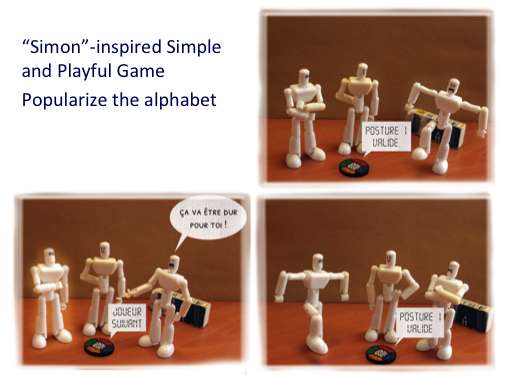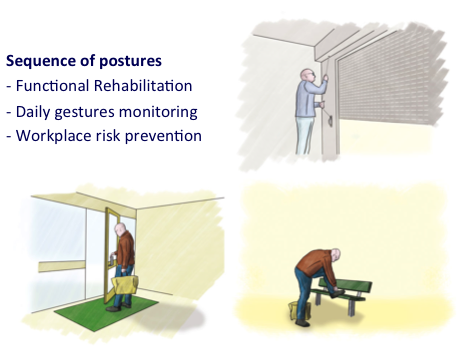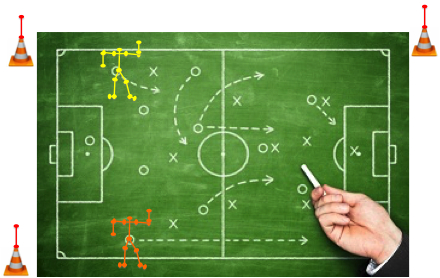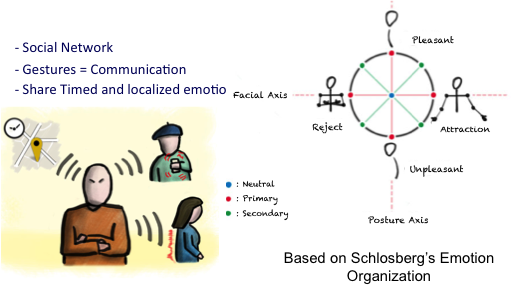BoWI proposes the first “Hierarchical Posture Grammar” based on Arm, Back and Legs postures.
BoWI opens new, unexplored opportunities for interactions between users (inter-BoWI), and between users and the environment. Original use cases have been proposed to test the BoWI systems. Considering the possibility to identify posture with low-cost low-power resources, the BoWI team came up with three proposals related to posture recognitions
Combinatorial alphabet
The first one (Fig. 1) is the proposal of a combinatorial alphabet of gestures that can be used for any control. This idea has two three advantages. First the combination of local simple libraries (ARM, LEG, …) gives a huge number of possible postures. Secondly, each local gesture can be identified with precomputed signatures that make the discrimination of gestures easier in noisy contexts. Finally the library is meaningless, so general, and can be exploited for different types of control.
Imitation game
The second case (Fig. 2) study is a game inspired by the famous toy of the eighties called “Simon”. Here the idea is that each player must redo the list of previously registered gestures and add a new one. The registration and the control is performed by the BoWI system. This game can also be used to populize the BoWI Gesture Alphabet.
Functional rehabilitation
The third case study is the registration of daily gestures to be analysed by physician or occupational therapists. Many very practical applications will benefit from this case study such as the monitoring of position at work, the monitoring of elder people at home or for functional rehabilitation at home.
Zyggie Demonstrator scenario (see videos)
SIMON (user vs. Computer)
- Computer adds a new posture to a sequence the user must replay
- To be used to compare classification:
- Data (IMU, with/without Gyro, RSSI patterns, distances, etc.)
- Methods: PCA, K-means, SVN+NN (+ learning phase)
- Constraints:
- Tend – Tstart < Td
- Tj+1 – Tj < Tdj
- Posture Matching
- Classification + Timing observation
Prospective usage
Low cost Outdoor motion capture: BoWI BAN (player gestures) + 2 or 3 BoWI nodes as fixed beacons around the field (geolocation)
Social network: share emotion with gestures








